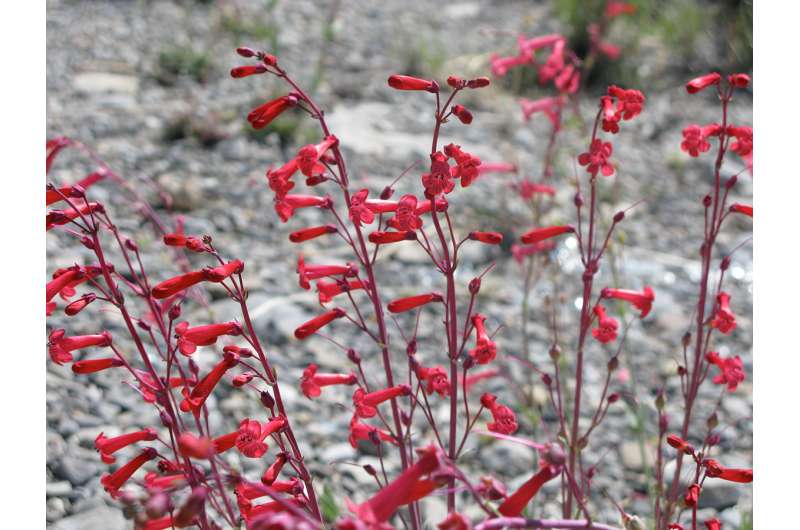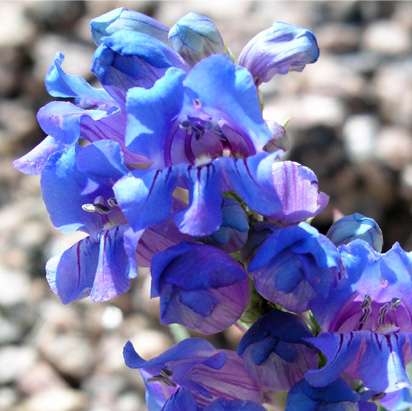Learning about the hummingbirds and the bees in floral diversity

The beautiful flowers and impressive diversity of a large genus of roughly 250 species North American and East Asian flowering plants have inspired scientists and gardeners alike. The North American genus of perennial herbs and sub-shrubs (Penstemon) have diversified in their vegetative and habitat specialization, but perhaps most impressive is the floral diversity.
The Penstemon genus is largely pollinated by insects such as bees and wasps (hymenoptera pollination), but there have been repeated independent transitions to pollination by hummingbirds. With these shifts come alterations in floral color, morphology, nectar traits, and pollen dispensing. A typical "bee" Penstemon is blue or sometimes yellow/white with wide corollas and concentrated nectar. A typical "hummingbird" Penstemon is red with narrow corollas and dilute plentiful nectar.
The floral diversity and repeated shifts in pollination have inspired a series of scientists to study adaptive evolution in the genus. But until now many of the species relationships have been unresolved and hampered by the very thing that makes studying the genus so appealing. The rapid speciation and evolutionary radiation that makes studying adaptation in these groups so interesting have also meant the species relationships have been difficult to resolve—-until now.
Dr. Carolyn Wessinger, who recently published "Multiplexed shotgun genotyping resolves species relationships within the North American genus Penstemon" in the American Journal of Botany, said that as an evolutionary geneticist, "I never thought I would become involved in a phylogenetic study." But the birds and the bees (and plant sex) can lead you down unexpected paths.

Wessinger's motivation for exploring the Penstemon phylogeny came from a "need to identify pairs of closely related species that have flowers adapted to different pollinators to use for genetic mapping studies." Using herbarium specimens for a few species of interest, Wessinger and her co-authors attempted multiplexed shotgun genotyping (MSG) to extract DNA sequence data from thousands of sites across the genome. "To our delight, the MSG protocol was straight-forward, successful even with DNA from older specimens and relatively simple to infer phylogeny," she said.
The authors then expanded their sampling to 77 of the roughly 280 Penstemon species. The multiplexed shotgun genotyping resolved species relationships and confirmed both the ancestral state of hymenoptera pollination and independent transitions to hummingbird pollination.
Although many previously unresolved species relationships were determined with this approach, not all were. It suggests the group rapidly diversified and that the lineage still has a few secrets to uncover.
More information: C. A. Wessinger et al, Multiplexed shotgun genotyping resolves species relationships within the North American genus Penstemon, American Journal of Botany (2016). DOI: 10.3732/ajb.1500519
Journal information: American Journal of Botany
Provided by Botanical Society of America



















